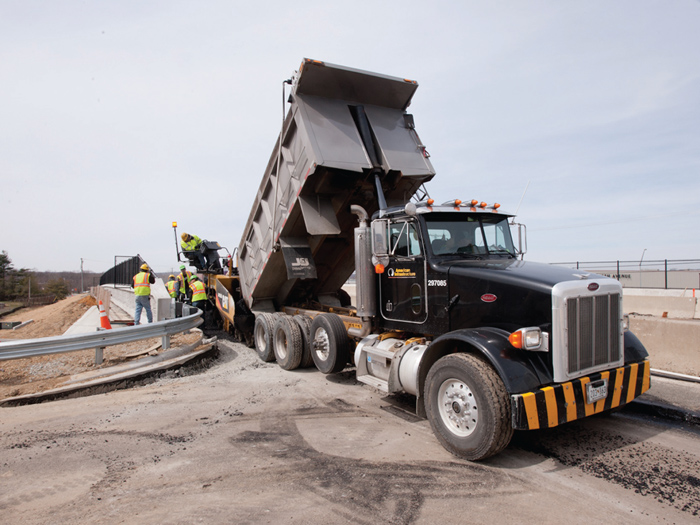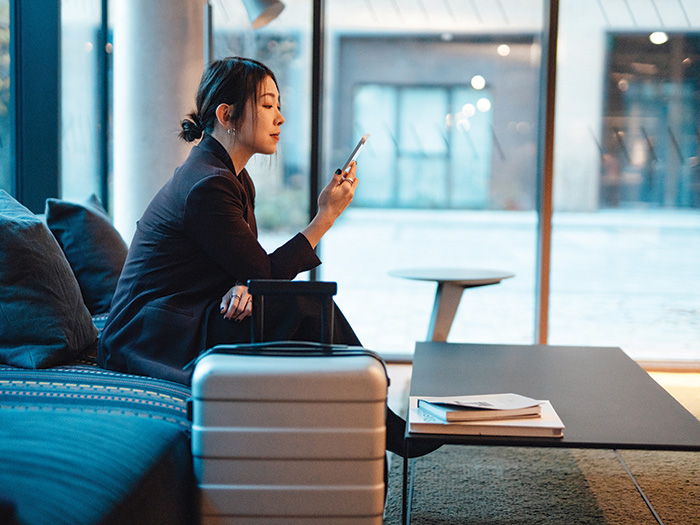Teddy Award Winner
Sending Workers Home Safely

The “Safety Flash” from May 21, 2013 began: “Recently at one of our projects, an AI employee noticed that two of our subcontractor’s employees were in the ‘line of fire’ and used his voice to keep them safe.”
The notice described a near miss in which the subcontractors were standing too close to a pipe as it was being pushed through casing when an American Infrastructure (AI) worker noticed the wooden push block begin to fracture. The wood could snap off with enough force to break bone.
He warned the contractors of their dangerous position and they evaded injury. The Flash concluded: “We all have the chance to make a difference in someone’s life while working in this industry; we just need to step up and care enough to ‘make a difference.’ ”
Safety Flashes are shared with site crews every day during a morning huddle, and they embody the “culture of care and concern” cultivated at AI, a heavy civil construction company with 1,800 employees.
That culture — and the effective implementation of the company’s safety philosophy — is why American Infrastructure was named one of the 2013 winners of the Teddy Award, the Theodore Roosevelt Workers’ Compensation and Disability Management Award.
“The best claim is the one that never happens.”
— Bryan Schwartz, risk manager,
American Infrastructure
Since partnering with management consultancy JMJ Associates in 2008, the company has adopted an “Incident and Injury-Free” philosophy that helped reduce the company’s injury rate by 50 percent. After all, “the best claim,” said risk manager Bryan Schwartz, “is the one that never happens.”
“Simply hurting fewer people year over year had become a used-up paradigm for American Infrastructure,” said Greg Savage, a senior consultant with JMJ. “Demonstrating care for individuals and their families, and continuously confronting ‘good enough’ helped them develop from metric-centric to people-centric.”
That people-centric approach, dubbed the “Home Safe Tonight” initiative, encompasses training, onsite safety and wellness programs.
Morning Huddles With the Team
Morning huddles are a Home Safe Tonight cornerstone because they provide an opportunity to physically and mentally prepare for the day ahead. Led by the foreman, the crew discusses the day’s work plan, including potential hazards like bad weather, utilities in the area, or other crews at work. After the review, workers — viewed by the company as “industrial athletes” — go through a 10-minute routine of three to five stretches.
“If we condition them, we can reduce our strains and sprains. It helps us improve our outcomes in workers’ comp,” said Schwartz. “And while they stretch, they’re still talking about the work being done that day. They’re building relationships with each other, learning about each other personally.”
Personal connections make workers more comfortable approaching one another about hazardous behavior. All crew members — not just safety professionals — are expected to keep their eyes open for potential dangers and alert someone immediately of risky conditions or practices.
“Safety is everyone’s responsibility,” said Mark Smith, vice president of safety and claims.
Introduction of the “green hard hat” encourages that shared responsibility. New hires sport a bright green hat for their first 90 days on the job, allowing veterans to recognize when a colleague is less experienced and may need more explanation and coaching.
“You ask a guy to cut pipes. An experienced guy will know what that means and how to do it, but you can’t tell by looking how experienced someone is,” said Schwartz. “If he’s wearing a green hard hat, you know to give more direction: what equipment to use, what PPE to wear, the safest way to do it.”
Introduction of the green hard hat has reduced injury frequency especially in AI’s mining and asphalt plants, where injuries were common among new workers.
Leadership Involvement
JMJ Associates also played a key role in getting AI’s upper-level managers involved with safety. Superintendents, project managers, construction managers and senior managers attend annual two-day “safety commitment workshops” to establish a personal relationship and commitment to safety, Smith said.
CFO Denis Moore attested to the workshops’ effectiveness. “I’ve watched grown construction guys, foremen, superintendents and construction managers almost moved to tears by the impact of that program.” Having lost a brother to an on-the-job accident, Moore understands safety is a top priority.
“Every Monday morning at 6:45 a.m., we have a senior leadership team meeting, and the first item on the agenda is safety,” Moore said. Every incident gets reviewed, as well as trends in workers’ comp claims. “In 2006, we were at 179 claims, and in 2012, it’s down to 56.”
The emphasis is of particular interest to CEO Ross Myers, he said.
“I met Ross first in 2010, and the first hour that we were together, two-thirds of that time was spent on the importance of safety to employees,” Moore said. “Ross has a deep personal commitment to it. Home Safe Tonight means something at American Infrastructure.”
Health and Wellness
Injury prevention goes deeper than on-the-job safety. It starts inside the heart, bones and muscles of every AI worker. Wellness metrics and goals are tracked and rewarded regularly, another practice encouraged by Myers.
Biometric testing, including measurement of blood pressure, heart rate, cholesterol and blood sugar, drives the wellness initiative. Employees can review their numbers with on-staff health coaches to develop goal-specific plans, whether it’s to lose weight, quit smoking or improve overall fitness.
Individual and team challenges help motivate workers. For example, AI began its own “Biggest Loser” competition in February, with 136 participants. Forty-nine employees lost 196 pounds over four weeks, with an average weight loss of 4 pounds per person.
A “stepping” program has workers tracking their activity with Fitbit devices. Those who meet certain goals win rewards like televisions, gift cards and iPads. Health coaching has also helped three employees reduce their tobacco use and one quit entirely.
AI also enlists the help of a medical director to assist with occupational injuries. Whenever a worker is injured, the foreman on duty immediately calls Dr. Lawrence Goren of OnSite Innovations, who speaks with the worker to assess his level of pain, bruising and swelling, and determine the most appropriate treatment.
“He’ll call a medical facility ahead of time, explain that an AI employee is coming in, describe his job and injury, and help guide the facility through treatment,” Schwartz said. “He might follow up with the employee about their prescriptions and any of the doctor’s instructions as well.” This “day-zero” approach ensures that claims stay under control and workers get back on the job as soon as possible, Schwartz said.
American Infrastructure’s personal approach to worker safety has not only benefited employees’ health, but also its bottom line. According to Moore, clients are more willing to award contracts to companies with strong safety programs. And with both their construction and materials businesses expanding, AI has been able to attract more employees to keep that growth stable.
“I’m proud of our company,” said Moore, “and I can tell you the group collectively — risk management, safety, leadership, finance — we’re all teaming together to send people home safe tonight.”










